Find out the exciting story about Island of Yap money
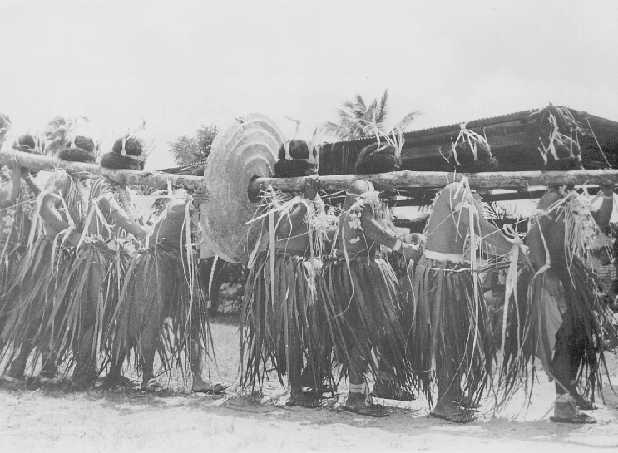
Stones as means of payment: the story behind Island of Yap money. Source: en.wikipedia.org
Once, PaySpace Magazine issued an article about polymer banknotes. Namely, we mentioned which countries using plastic banknotes. Today, we would like to talk about “unusual” means of payment as well. However, this time, it is about a really odd type of money – stone money, called Rai stones. Thus, it can help see the old issue “what is money?” in a different light.
There is a small island named Yap in the Pacific Ocean, which is also a part of the Federated States of Micronesia. In general, it is an ordinary, unremarkable island that doesn’t even have gold or silver on it. Nevertheless, many years ago, explorers found limestone deposits on some part of the island (apparently, far away from local villages). Then, they decided to carve the limestone into different shapes, but the disc was the most popular shape. The explorers brought it back with the help of their bamboo boats. As of today, nobody can say for sure whether local people started to use these very limestone discs as the means of payment that day right away, or it took some time for them to realize they could use it as money.
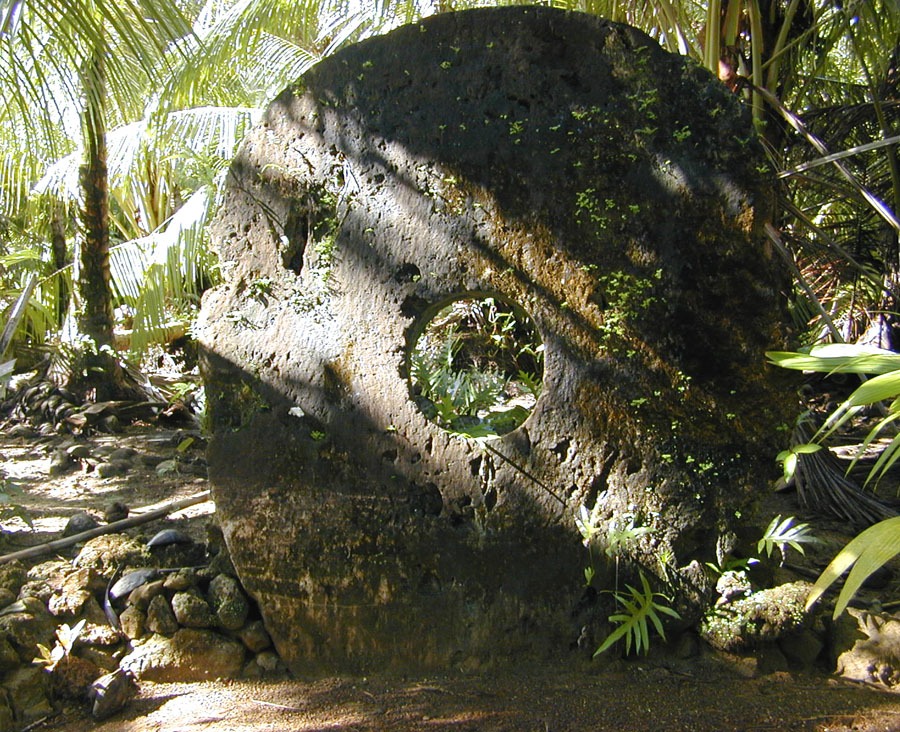
The largest one could be as large as 4 m and 0,5 m thick. Source: en.wikipedia.org
Moreover, there is another theory, which seems to be more like a local legend. According to the Yap legend, the explorer Anagumang went on an expedition in order to search for a stone suitable for making money. The explorer discovered limestone rocks in Palau and returned with the first stone coin. There was no aragonite and calcite on Yap, and therefore, they became valuable materials. Initially, Anagumang ordered his people to carve a stone in the shape of a fish, but was not satisfied with the result. The next shape was a crescent, but he finally chose a stone in the shape of a “full moon” with a hole in the middle (for easy transportation using a wooden pole).
Anyway, people eventually realized that they needed some kind of universal/single approved means of payment, which everybody would accept, so that it would be possible to use it to pay for stuff. These stones looked pretty for people, and they agreed to use them as money, similar to the gold standard in other countries. On the other hand, such stones became really valuable, and people didn’t use them for everyday purchases. For example, it could be a good price when it comes to weddings or dowries. Of course, if somebody ran out of food or necessary provisions, they would use their stone money to save their lives.
SEE ALSO: Unique or weird? TOP-10 unusual world coins
From means of payment to vague asset
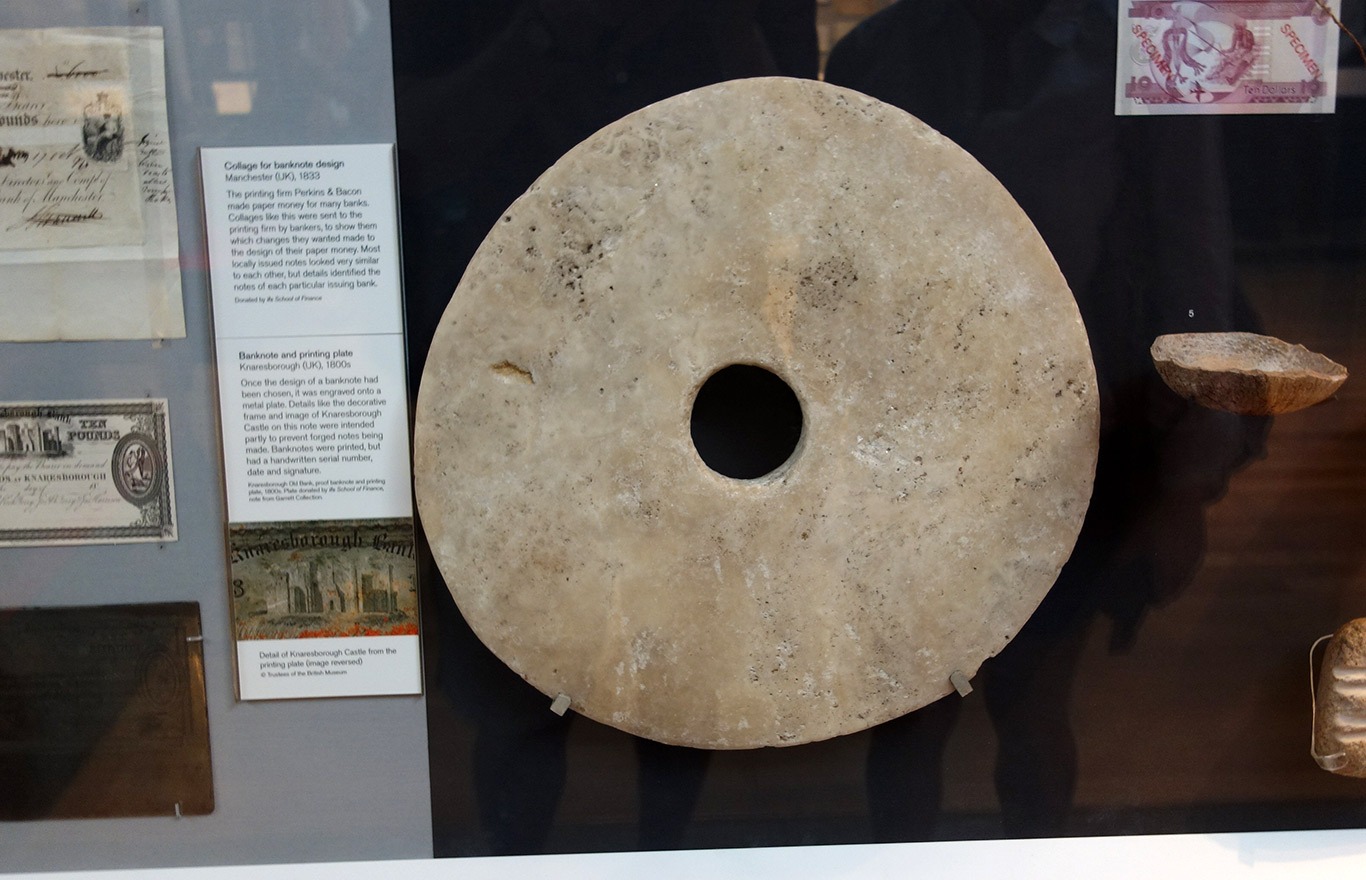
The smallest Rai stone could be 3-3,5 cm in diameter. Source: en.wikipedia.org
The smallest Rai stone could be 3-3,5 cm in diameter, but the largest one could be as large as 4 m and 0,5 m thick, which turned it into 4 tonnes of almost immovable asset. And we can assure you, a 4000 kg coin is really heavy. It is even heavier than, let’s say, a car. That resulted into an interesting situation – such money turned into something very abstract. People began to use the stones “theoretically”, meaning talking about them and not giving them to the new owner in person. Thus, imagine there is a large and heavy Rai stone somewhere in a settlement. The owner of this stone needs to buy something important, so he/she chooses to use this big asset. Theoretically, the buyer would give a stone to the seller. However, it is extremely hard to move such a giant stone without specialized equipment, so the stone will not be moved. As a result, everyone in the village will know that the stone has a new owner.
Furthermore, some stories show that a stone dоеsn’t evеn nееd to be on the island to соunt as monеу. According to some people from the island, one day, a group of people had to deliver a stone to the new owner, and the final destination was quite far away so they had to use boats. The crew hit a big storm, and to cut a long story short, the stone ended up lying on the bottom of the ocean. The guys came back without the stone and told the new owner what had happened. The new owner of the stone decided not to bring this big piece of limestone back, since everybody he was talking with agreed that they would accept the stone as the means of payment no matter where it was located since it didn’t make it less valuable. Therefore, it is possible that somebody still owns this Rai stone in 2020, even if nobody has really seen it for a long time.
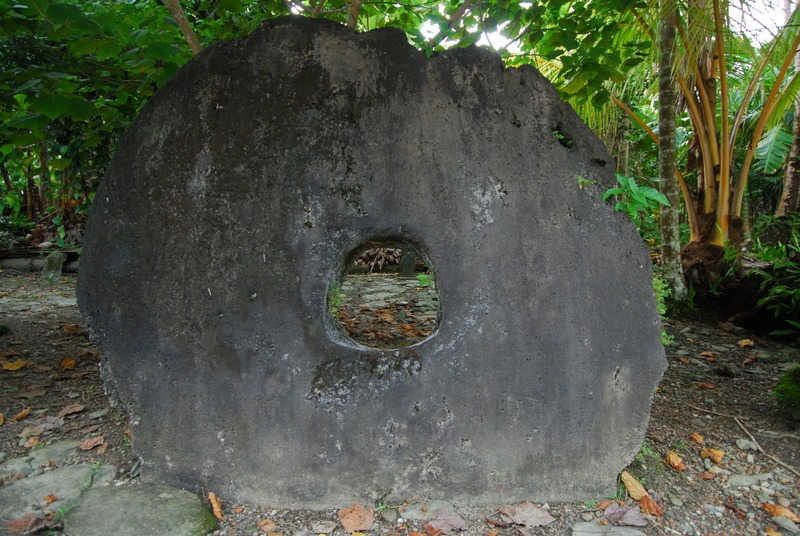
Some experts even compare the Rai stones system with the blockchain. Source: en.wikipedia.org
The bottom line
Such an interesting system, after all, seems to be quite familiar. Indeed, does that ring any bells? Let’s say you go shopping online. In this case, if you buy some stuff, you’ll pay for it with your electronic money (not to mention cryptocurrency). What is money then? What has really changed in this world? Basically, the digits from your account changed, and some part of them went somehow to the shop owner. On the other hand, the seller’s bank account digits changed as well, but it doesn’t make it tangible somehow, I mean the entire process. It’s just some “digits flying through the air”, so nothing has fundamentally changed.
Imagine, you live on an island and have a similar system. The Rai stone on the bottom (which you could theoretically own) belongs to the online shop owner now, if you decide to pay for your purchases with it.
Some experts even compare the Rai stones system with the blockchain and call it its first prototype.
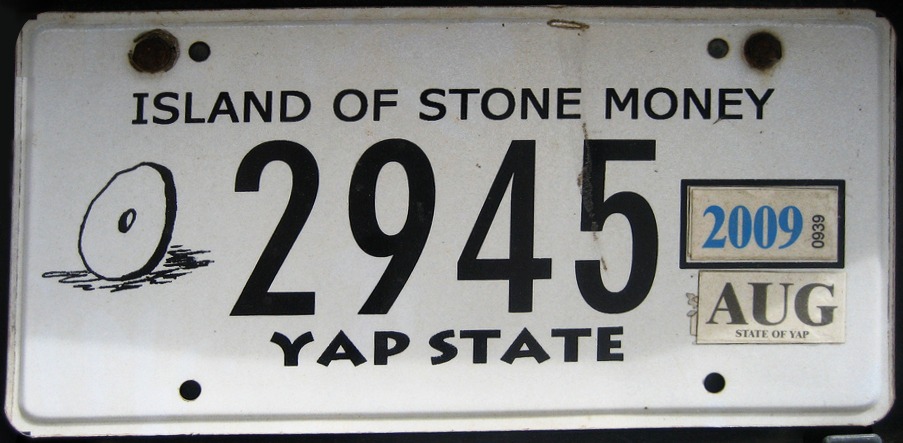
They are still considered as a national symbol and are depicted on local license plates. Source: en.wikipedia.org
Anyway, Yap people use the US dollar nowadays. After all, as we’ve mentioned above, Yap is a part of the Federated States of Micronesia, where the US dollar is an official currency. Thus, the modern currency has replaced the stones, but the Rai still exists, and is exchanged in more traditional ways. What’s more, they are still considered as a national symbol and are depicted on local license plates.
SEE ALSO:









